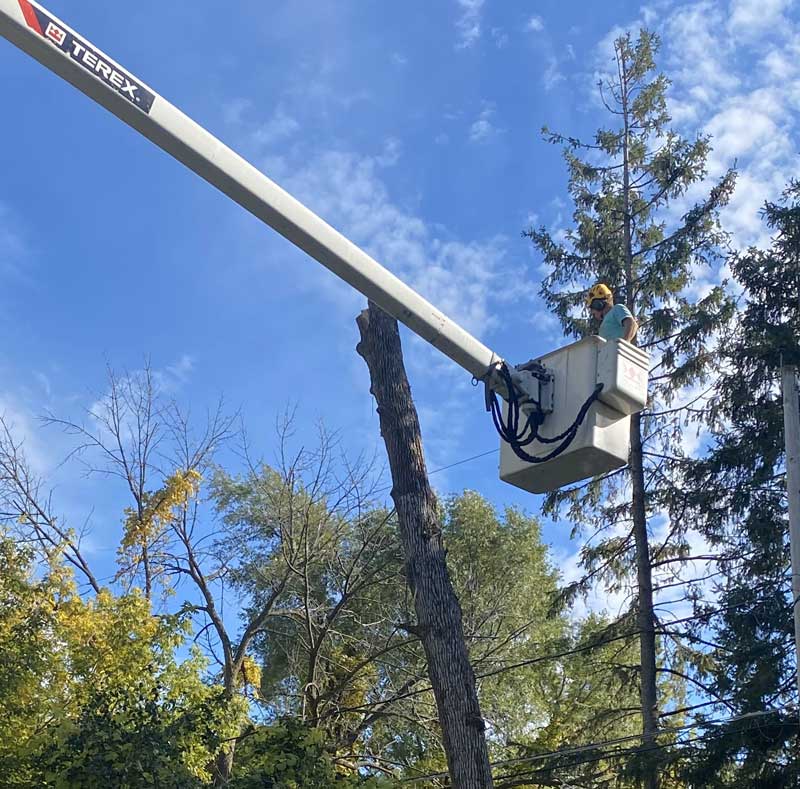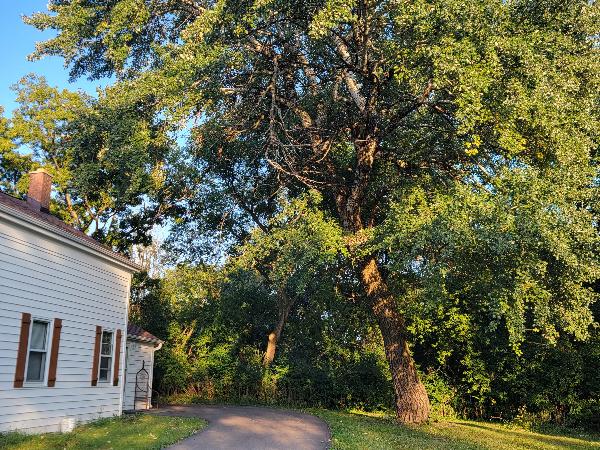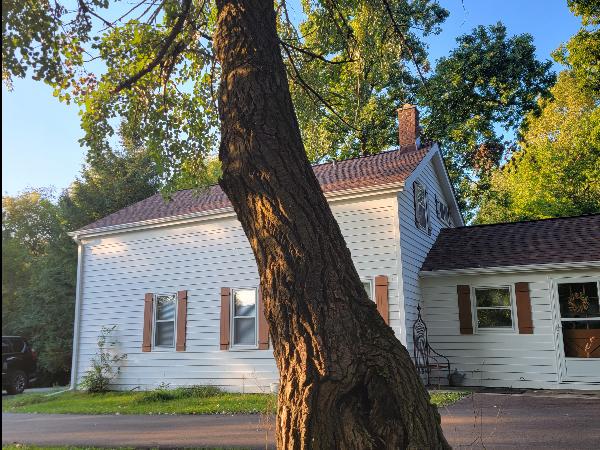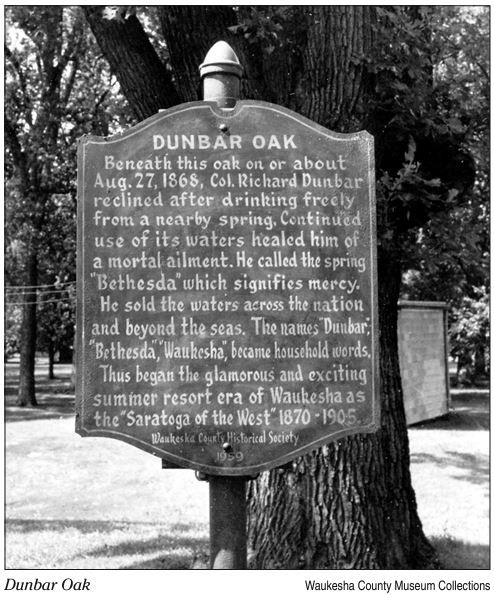Tree Care & Removal
Dunbar Tree Service – Waukesha, WI
We provide professional services with experienced ISA Certified Arborists utilizing safe, professional equipment on Waukesha County trees. Our expert tree services include tree removal, tree trimming, stump removal, storm damage clean-up, and more!
We also offer a professional tree health risk assessment with our on-staff ISA Certified Arborists to help you make informed decisions about any damaged or diseased trees.
Serving All of Waukesha County and Much of Southeast Wisconsin.

In Waukesha County, where the rich diversity of trees adorns the landscape, it’s essential to understand that even the hardiest of trees sometimes need a helping hand. While trees offer numerous benefits to our environment and aesthetics, they can face challenges that require the expertise of arborists. Whether you are a homeowner, landscaper, or business owner, this guide will help you gain insight into the types of common Waukesha County trees that often require arborist intervention for their health and well-being.

Waukesha County boasts a treasure trove of native tree species, each with its unique characteristics and benefits. Here are some of the most common native trees that grace the county:
While native trees are essential for ecological harmony, there are noteworthy non-native tree species that flourish in Waukesha County’s environment. Consider these popular options:
These Waukesha county trees, while popular, are susceptible to various pests and diseases. Arborists play a vital role in diagnosing and treating these issues to preserve the health of these trees.
Oak Trees
Oak trees, celebrated for their strength and longevity, are prominent in Waukesha County. However, they are susceptible to oak wilt and oak anthracnose.
Maple Trees
Maple trees, known for their stunning fall foliage, can face challenges such as leaf spot diseases, aphid infestations, and root problems.
Pine Trees
Pine trees, with their evergreen charm, are susceptible to pine needle scale, blister rust, and fungal diseases.
Spruce Trees
Spruce trees, with their distinctive conical shape, are vulnerable to issues like needle cast diseases and spider mite infestations.
Dogwood Trees
Dogwood trees, beloved for their elegant flowers, can suffer from powdery mildew and dogwood borer infestations.
Arborists are trained professionals who specialize in the care and maintenance of trees. Their expertise is invaluable for several reasons:
Early Detection
Arborists can identify tree problems at an early stage, preventing further damage and potential tree loss.
Proper Diagnosis
They can accurately diagnose tree diseases, pests, and structural issues, allowing for targeted and effective treatments.
Preservation
Arborists are committed to preserving the health and longevity of trees whenever possible, which is vital for maintaining the beauty of Waukesha County’s landscapes.
Safety
When trees become hazardous due to disease or structural issues, arborists can safely assess and address the risks, ensuring the safety of residents and property.

If you have trees on your property in Waukesha County, it’s essential to be vigilant and proactive in their care. The judicious selection and care of trees in Waukesha County are paramount for enhancing the region’s aesthetic appeal, ecological health, and overall quality of life. Whether your preference leans towards native trees for their ecological benefits or non-native trees for their ornamental charm, conscientious tree selection and diligent care are the keys to thriving landscapes. For further inquiries or assistance, do not hesitate to engage with local experts and resources dedicated to tree preservation and landscaping.
Visible Symptoms
If you notice visible signs of tree distress, such as wilting leaves, unusual discoloration, or dieback of branches, it’s time to seek professional advice.
Pest Infestations
The presence of pests like aphids, scale insects, or borers on your trees should not be ignored, as they can quickly damage tree health.
Tree Structure Issues
If you observe structural problems like leaning trees, cracked branches, or uprooted roots, it’s crucial to have an arborist assess the situation.
Disease Suspicions
If you suspect that your trees may be suffering from diseases such as oak wilt or Dutch elm disease, immediate arborist intervention is essential.
Pruning & Maintenance
Regular pruning and maintenance by a certified arborist can promote tree health and longevity.
The Dunbar Oak Waukesha Waukesha County Museum Collections Desperately ill and convinced his death was imminent, Col. Richard Dunbar sank down to rest under a strong white oak in Waukesha County one August day in 1868. A diabetic suffering from insatiable thirst, he had just drunk six tumblers full of water from a spring beside the tree. He began to feel better. He continued to drink freely from the spring waters, and soon the man doctors said would die within months felt completely cured.
Dunbar lived ten more years without a recurrence of his diabetes, and during this decade he made Waukesha, the spring waters and the “guardian angel” oak tree world-famous.
His faith in his own cure inspired him to offer the waters to others; his sharp business ability made it financially rewarding. The former engineer bought the spring, which he named “Bethesda,” and the land around it and actively began to promote the community. Waukesha soon became a haven for those seeking not only restoration of their health but also relaxation. Soon Dunbar was selling the spring waters all over the globe.

Other promoters entered the picture and several more springs were developed, among them Hygeia, Arcadian and White Rock. To quote from an account of those times by Libbie Nolan, of the Waukesha County Historical Society:
“Fancy ornate pavilions enclosed each bubbling spring … Great hotels sprang up…. Guests came from far and wide to drink from the springs, to relax, and to be amused. Among them were Mrs. Abraham Lincoln, President Grant, Vice President Adlai Stevenson, Supreme Court Justice Salmon P. Chase, Horace Greeley as well as governors, generals, statesmen and many, many more.
White Rock water became a fashionable beverage all over the world after it was carbonated in 1890, even making its way to the coronation of the King of England … When Col. Dunbar died in 1878 (of a heart attack), the village was notified by the passing out of black-edged handbills.
The fame and excitement of our Western Saratoga lasted nearly forty years. Then it faded away as the century turned.”
Dubbed the Dunbar Oak, it was a focal point of the large park at Bethesda Spring and is marked by a plaque put up by the Waukesha County Historical Society in 1959. After noting Dunbar’s first introduction to the waters, it ends with the words: “The names ‘Dunbar,’ ‘Bethesda,’ and ‘Waukesha’ became household words. Thus began the glamorous and exciting summer resort era of Waukesha as the ‘Saratoga of the West’ 1870–1905.”
The Dunbar Oak went down during a severe thunderstorm in 1991. Prior to that, the oak had been cabled because it had developed a pocket of decay that made it vulnerable. But with winds clocked at close to 100 miles per hour at the Waukesha airport, the trunk of the Dunbar Oak snapped at about 10 feet above ground. A count of the annual rings revealed the tree was over 320 years old.
The loss of the tree affected many locals, as evidenced by the long lines of cars that paraded past the site where it fell, as if people wanted to pay their last respects. Waukesha City Forester David Liska, planning for the future, took cuttings from trunk sprouts to Johnson’s Nursery. There they grew in secret for 12 years. In May 2004, in celebration of Waukesha’s 25th anniversary as a Tree City USA and Wisconsin Forestry’s centennial year, a “reborn” Dunbar Oak was planted at the site of the original and watered with 15 gallons of donated Bethesda Springs water.
Excerpted from Every Root an Anchor: Wisconsin’s Famous and Historic Trees
by R. Bruce Allison (© 2005 Wisconsin Historical Society)
Sources: Pat Buckley, Waukesha Jean Penn Loerke, Waukesha David Liska, Waukesha
Chris Dunbar is an ISA certified arborist, ISA #WI-1163A, working in the industry since 1999. Chris specializes in a wide range of residential and commercial tree services, where he is dedicated to maintaining a safe and professional environment. With over 20 years of working in southeast Wisconsin, he brings a high level of expertise to every project.
Additionally, Chris is licensed and certified for the application of pesticides, fungicides, and insecticides by the State of Wisconsin Department of Agriculture, Trade and Consumer Protection.